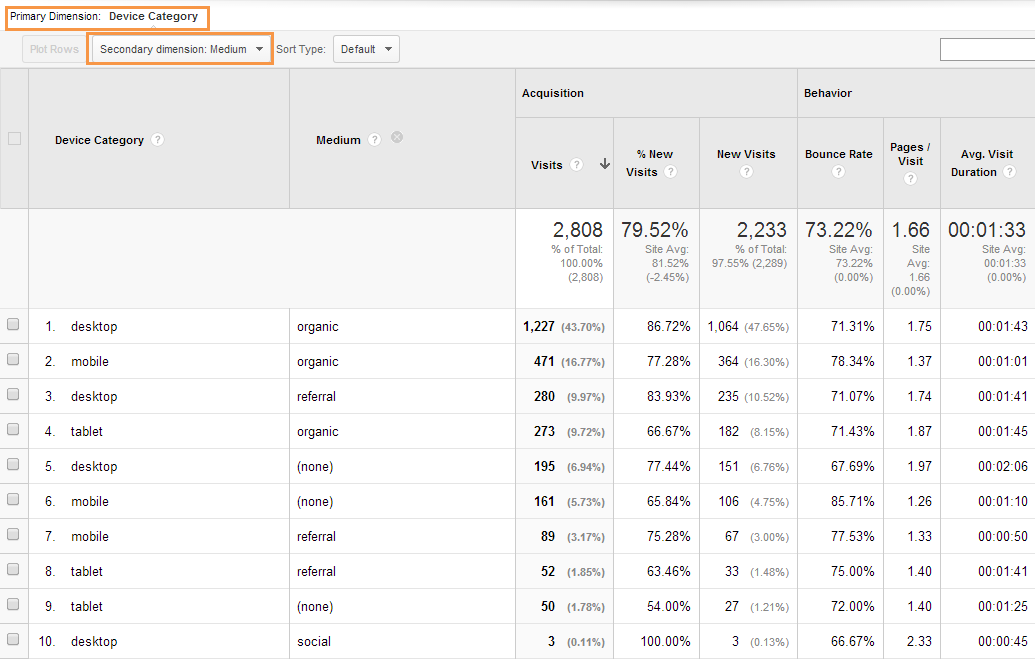Google Analytics Proficiency: Unveiling the Prospective of Secondary Dimension
Google Analytics Proficiency: Unveiling the Prospective of Secondary Dimension
Blog Article
Opening the Power of Second Dimension Analytics for Boosted Information Insights and Decision-Making
In the realm of information analytics, primary measurements often take the limelight, however the true deepness of understandings lies within the world of second dimensions. By using the power of additional measurement analytics, organizations can reveal concealed trends, uncover correlations, and essence a lot more purposeful verdicts from their information.
Relevance of Secondary Measurements
Exploring the significance of second dimensions in analytics reveals the covert layers of data understandings crucial for educated decision-making in different domains. Secondary dimensions provide a deeper understanding of key data by providing added context and perspectives. By incorporating additional dimensions right into analytics, organizations can draw out a lot more thorough and nuanced understandings from their datasets.
One trick relevance of additional dimensions is their ability to segment and categorize primary information, allowing for a much more thorough evaluation of particular subsets within a dataset. This segmentation enables services to recognize patterns, trends, and outliers that may not appear when checking out the information overall. Additionally, additional dimensions aid in discovering connections and dependencies in between different variables, bring about more exact projecting and predictive modeling.
In addition, second dimensions play an important role in enhancing data visualization and coverage. By adding additional dimensions to visualizations, such as charts or graphs, analysts can produce extra interesting and informative representations of information, facilitating better interaction of searchings for to stakeholders. Overall, the integration of additional measurements in analytics is instrumental in unlocking the full possibility of data and driving evidence-based decision-making.
Secret Advantages of Utilizing Additional Dimensions
Using second dimensions in analytics offers organizations a tactical benefit by enhancing the deepness and granularity of data understandings. By dissecting information utilizing secondary measurements such as time, area, tool type, or individual demographics, organizations can uncover patterns, patterns, and correlations that might otherwise remain hidden.
In addition, the usage of second measurements enhances the context in which primary data is translated. By leveraging second dimensions in analytics, organizations can harness the full capacity of their information to drive better decision-making and accomplish their organization goals.
Advanced Data Analysis Strategies
A deep dive into advanced data evaluation strategies reveals innovative techniques for drawing out beneficial understandings from intricate datasets. One such technique is equipment discovering, where algorithms are employed to identify patterns within information, forecast end results, and make data-driven choices. This technique allows for the automation of logical model building, making it possible for the handling of big quantities of information at a much faster pace than traditional approaches.
An additional innovative technique is anticipating analytics, which link makes use of analytical algorithms and artificial intelligence strategies to forecast future results based on historic information. By examining trends and patterns, organizations can prepare for customer habits, market trends, and potential risks, empowering them to make aggressive decisions.
In addition, text mining and belief evaluation are important strategies for removing understandings from unstructured information sources such as social media sites remarks, consumer reviews, and survey reactions. By assessing text information, companies can recognize customer point of views, determine emerging trends, and enhance their solutions or products based upon feedback.
Enhancing Decision-Making Via Additional Measurements

Enhancing decision-making through additional measurements allows companies to make even more educated and you can look here targeted critical options. By segmenting consumer data based on second dimensions like buying history or involvement degrees, business can customize their marketing methods to particular audience sectors, leading to enhanced conversion prices and consumer contentment. Second measurements can assist recognize correlations and partnerships between different variables, making it possible for organizations to make data-driven choices that drive development and success.
Applying Additional Dimension Analytics
When including secondary measurements in analytics, companies can open deeper insights that drive calculated decision-making and improve general efficiency. This entails recognizing the details concerns the company seeks to answer and the information points required to address them.

Moreover, organizations must leverage progressed analytics devices and modern technologies to enhance the process of incorporating second measurements. These tools can automate information handling, evaluation, and visualization, allowing organizations to concentrate on interpreting insights rather than hands-on data control.
Final Thought
To conclude, additional dimension analytics play a critical role in boosting data insights and decision-making procedures. By utilizing pop over here advanced data analysis techniques and carrying out additional dimensions effectively, organizations can open the power of their data to drive calculated service decisions. The vital advantages of making use of additional dimensions can not be overstated, as they provide a deeper understanding of data trends and partnerships. It is crucial for organizations to utilize secondary measurement analytics to remain affordable in today's data-driven landscape.
In the realm of data analytics, main dimensions frequently take the limelight, however the real depth of understandings lies within the realm of additional measurements.Making use of second dimensions in analytics offers organizations a calculated advantage by enhancing the deepness and granularity of data understandings. By leveraging second measurements in analytics, companies can harness the complete possibility of their information to drive much better decision-making and achieve their organization objectives.
Applying data recognition procedures and regular audits can help preserve data quality and integrity.
By making use of advanced information evaluation techniques and implementing second measurements efficiently, companies can open the power of their data to drive critical company decisions.
Report this page